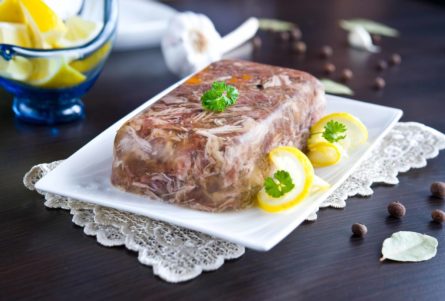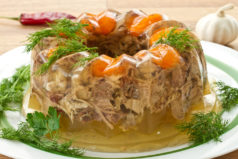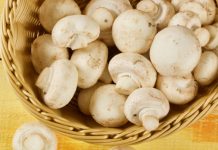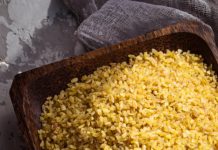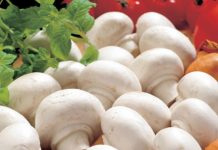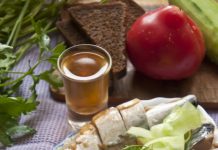Jellied meat is one of the most popular dishes on the festive table, and almost every housewife has her own recipe for its preparation. Many mistakenly call jelly jelly, but this is not entirely true. Indeed, both dishes are prepared from meat products, but both the cooking technology and the ingredients used differ. What are the features of the preparation of jelly and aspic, what is the difference between these dishes?
Material Content:
What is the difference between jelly and aspic
At first glance, the difference is almost imperceptible. Both dishes are prepared from meat and meat offal for a long time. In both cases, the appearance of the prepared dishes will be the same - this is finely sorted meat, filled with strong broth, which has frozen because of the high content of gelling substances.
However, foods have significant differences. Which ones will be indicated below.
What is jelly
Jelly - a cold meat dish, in the preparation of which only beef is used, as well as beef offal.
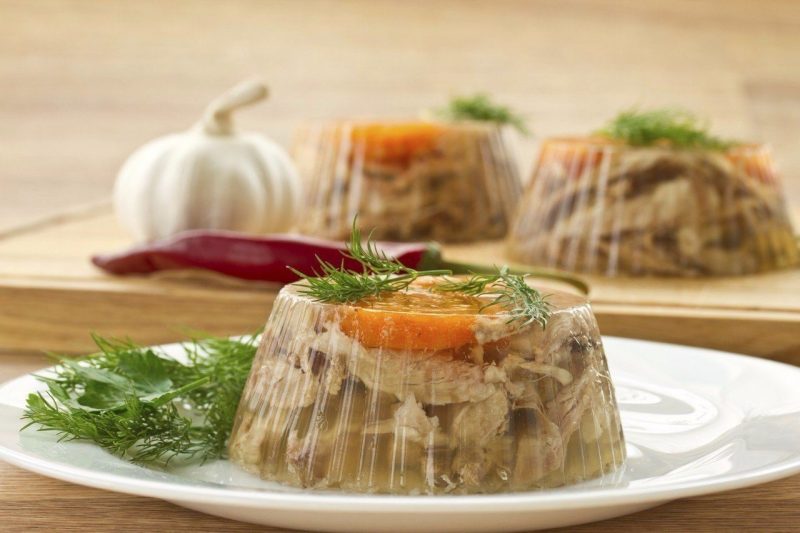
Beef jelly is prepared much longer than aspic, and the output is not so strong. In its structure, it is softer. Only garlic is used from seasonings, and the broth comes out darker due to the long cooking process.
Jellied - what is this dish
Jellied meat is another type of cold meat dish, in the preparation of which several varieties of meat are used simultaneously.
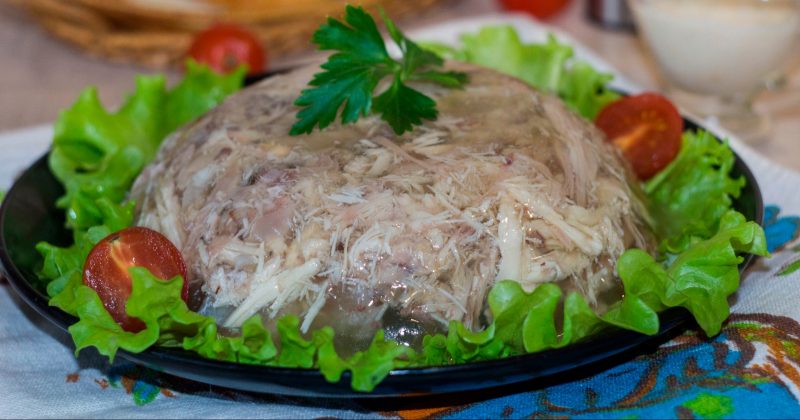
This dish is cooked faster than jelly, and richly seasoned with spices and roots to the taste of the hostess.
The rest of the dishes discussed are very similar: the cooked meat is disassembled into fibers, placed in containers and poured on top with slightly cooled broth. When the liquid takes a jelly-like appearance, the food can be served to the table.
The difference in cooking technology
Despite a more or less similar set of products, the technology for preparing snacks is significantly different.
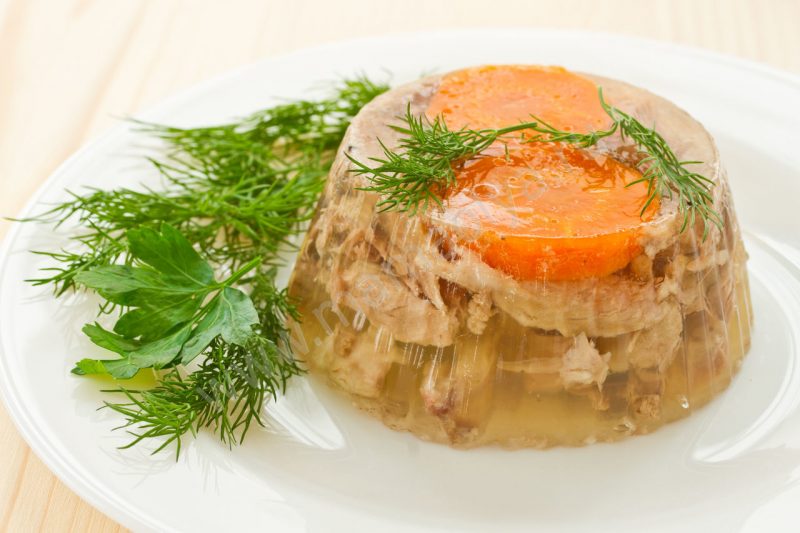
For cooking jellied hostess will need no more than six hours.
- First, those meat products that contain the most gelatin are laid in cold water - these are ears, drumsticks, tails, hooves.
- An hour from the start of cooking, a turn of chopped bird, pulp on the bone occurs.
- And an hour before being ready, all kinds of roots and spices are laid in a pan for the remaining components.
- After cooking, the meat is pulled out of the broth and disassembled into fibers, which are sent to previously prepared containers. Boiled chopped carrots are sometimes spread on top of the meat.
- Filter the broth at will, achieving greater transparency, and fill them with prepared meat.
- After that, the jelly goes to the refrigerator for solidification.
With jelly, the situation is somewhat different.
- First, all its components are soaked in brackish water for several hours, after which they are sent to a pan with cold water at the same time.
- The jelly is cooked for at least eight hours, most often ten, or even twelve, which makes the broth not only dark, but also cloudy.
- After the cooking time has come to an end, the meat is removed from the broth and disassembled into fibers.
- The liquid is brought to a boil again and removed from the heat. Then let it cool slightly and introduce grated garlic with beaten egg white. The latter has the property of folding up and absorbing the entire rubbish.
- The cooled broth is filtered through several layers of cheesecloth, after which it is poured with pre-prepared meat.
- The dish is sent to the refrigerator for solidification.
The jellied meat turns out to be more transparent, lighter and harder than jelly.
Product Differences
One of the most important differences between aspic and jelly is in the ingredients from which they are traditionally prepared.
- For jellied meat use not only beef, but also pork, as well as poultry. As a rule, in order to obtain a strong rich broth, parts of animals that are rich in gelatin content are unsuitable for food. Usually, these are legs, drumsticks, ears, brain bones. They contain a large number of cartilage, which are responsible for turning the broth into jelly.
- Subsequently, pulp (both pork and beef), as well as poultry, preferably turkey or rooster, are added to the cooking broth.
- Coma of this, in the jelly must use spices. Usually it is bay leaf, allspice peas, carrots and other additives to taste. This variation allows you to get slightly different tastes of the finished dish each time.
Jelly is always cooked only from beef, the addition of other varieties of meat is unacceptable. Often, ears, heads and tails, legs are used to prepare this dish. Of spices, only garlic can be used.
Instead of a conclusion
Regardless of which of the discussed dishes the hostess decided to cook, there are some rules that should be followed in the preparation of both dishes.

- It is important to ensure that the broth does not boil excessively violently. This will add unnecessary turbidity to the frozen jelly or jelly and make the dish less attractive in appearance.
- Also, do not constantly stir the upcoming dish. The best option for obtaining a transparent broth is to timely remove the resulting foam with a slotted spoon.
- Salt both dishes only after the fire is turned off under the pan. This should not be done before - the water is constantly boiling, and therefore jelly or aspic can be over-salted.
- The water into which the meat is placed is poured into the cooking vessel only once. It should be exactly two times more than meat components. In the process of cooking, it is strictly forbidden to add water - the finished broth will not have sufficient strength for subsequent solidification.
- The curing rate is also affected by the percentage of fat content of the jelly or jelly components. The higher it is, the worse it will harden the finished broth.
- All ingredients for both foods should be the freshest. If you use freezing, then both dishes will turn out too muddy.
Which is better, aspic or jelly, depends on the taste preferences of the hostess and her guests. Recently, the clear boundaries between the two dishes have been gradually erased, giving way to imagination and experimentation with both the components of the dishes and the seasonings used.


